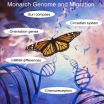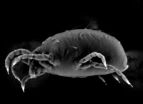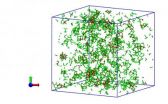(Press-News.org) Chestnut Hill, MA – Young girls have been viewed as far more savvy than boys at navigating the emotional pitfalls of friendships. But a new report shows that when friends let them down, girls are even more devastated than boys, researchers from Boston College and Duke University report in the journal Child Development.
Researchers examined whether or not girls cope better than boys when a friend violates a core expectation of friendships. The study of fourth- and fifth-grade children found that these violations – taking the form of cancelling plans, sharing a secret with a friend, or failing to be supportive at a difficult time – upset girls more than boys and left them feeling more angry and sad in response.
"Our findings stand in contrast to previous research that has shown boys to experience more anger than girls in their relationships," said Julie Paquette MacEvoy, the study's lead author and an assistant professor at Boston College's Lynch School of Education. "Here, we found that girls are in fact just as capable as boys are of anger. What leads boys and girls to feel angry, though, seems to be different. For girls, the anger comes out when they think that their friends have betrayed them or haven't been there for them."
The study of 267 girls and boys found girls were also more likely than boys to interpret friendship transgressions in a negative way, such as thinking that their friend does not care about them, does not value their friendship, or was trying to control them, the researchers report. In response, girls indicated they would be just as likely as boys to get revenge on their friend, or verbally scold their friend or threaten to end the relationship.
"There tends to be a perception of girls as being more passive than boys, but this just doesn't seem to be true. It seems that when girls feel that something that matters to them is in jeopardy, like their friendships, they are just as likely as boys to want to retaliate and to respond with aggression," said MacEvoy.
Earlier studies have shown that girls' friendships are more emotionally intimate than boys' friendships and that girls are better at supporting and helping their friends and demonstrate they're more capable of resolving conflicts with their friends. But studies have also shown that boys' friendships last as long as girls' friendships, that boys are as happy with their friendships as girls are and that boys are no more lonely than girls over time.
In the study, the Boston College and Duke researchers read brief stories describing how a friend violated a core expectation of friendship. For each story, the children were asked how they would feel about the incident if it really happened and how they would respond.
"These findings suggest that boys handle one aspect of friendship, coping with disappointment, better than girls," said co-author and Duke University Professor Steven Asher. "But why? Is it because boys have a more realistic understanding of human imperfection? Or do they just set the bar lower when it comes to friendships, so they are less likely to view the friend's behavior as a transgression?"
The researchers recommend that teachers, parents and adults interested in fostering healthy friendships among children help them learn to cope with the inevitable disappointments that can arise. Girls in particular may need extra guidance as they try to understand a friend's behavior and decide how to respond.
### END
When friends fail them, girls hurt worse than boys
2011-11-24
ELSE PRESS RELEASES FROM THIS DATE:
Is sustainability science really a science?
2011-11-24
LOS ALAMOS, New Mexico -- The idea that one can create a field of science out of thin air, just because of societal and policy need, is a bold concept. But for the emerging field of sustainability science, sorting among theoretical and applied scientific disciplines, making sense of potentially divergent theory, practice and policy, the gamble has paid off.
In the current issue of the Proceedings of the National Academy of Sciences, scientists from Los Alamos National Laboratory, Santa Fe Institute, and Indiana University analyzed the field's temporal evolution, geographic ...
How old yeast cells send off their daughter cells without the baggage of old age
2011-11-24
Kansas City, MO -- The accumulation of damaged protein is a hallmark of aging that not even the humble baker's yeast can escape. Yet, aged yeast cells spawn off youthful daughter cells without any of the telltale protein clumps. Now, researchers at the Stowers Institute for Medical Research may have found an explanation for the observed asymmetrical distribution of damaged proteins between mothers and their youthful daughters.
Reporting in the Nov. 23, 2011, issue of Cell the research team, led by Stowers investigator Rong Li, Ph.D., proposes that the limited mobility ...
Introducing the monarch butterfly genome
2011-11-24
The Monarch butterfly is famous for its ability to travel up to 2,000 miles from North America to central Mexico every fall. Now, it's enjoying fame of a different sort. In the November 23rd issue of Cell, researchers report the full genomic sequence of this iconic butterfly. The new genome is the first for any butterfly. It is also the first complete genome of any long-distance migrant.
"With this genome sequence in hand, we now have an overwhelming number of opportunities to understand the genetic and molecular basis of long-distance migration," says Steven Reppert ...
Is short stature associated with a 'shortage' of genes?
2011-11-24
New research sifts through the entire genome of thousands of human subjects to look for genetic variation associated with height. The results of the study, published by Cell Press in the December issue of the American Journal of Human Genetics, suggest that uncommon genetic deletions are associated with short stature.
Height is a highly heritable trait that is associated with variation in many different genes. "Despite tremendous recent progress in finding common genetic variants associated with height, thus far these variants only explain about 10% of the variation ...
UMMS scientists present draft sequence of monarch butterfly genome
2011-11-24
WORCESTER, Mass. – Each fall millions of monarch butterflies from across the eastern United States use a time-compensated sun compass to direct their navigation south, traveling up to 2,000 miles to an overwintering site in a specific grove of fir trees in central Mexico. Scientists have long been fascinated by the biological mechanisms that allow successive generations of these delicate creatures to transverse such long distances to a small region roughly 300 square miles in size. To unlock the genetic and regulatory elements important for this remarkable journey, neurobiologists ...
Researchers discover clues to developing more effective antipsychotic drugs
2011-11-24
Researchers from Mount Sinai School of Medicine, have identified the pattern of cell signaling induced by antipsychotic drugs in a complex composed of two brain receptors linked to schizophrenia. The discovery should allow researchers to predict the effectiveness of novel compounds for the treatment of schizophrenia and other serious mental disorders and may accelerate the development of better antipsychotic drugs. The findings are published in the November 23 issue of Cell.
Until now, the molecular mechanism through which current treatments for schizophrenia achieve ...
Big pest, small genome
2011-11-24
SALT LAKE CITY, Nov. 23, 2011 – A University of Utah biologist and an international research team decoded the genetic blueprint of the two-spotted spider mite, raising hope for new ways to attack the major pest, which resists pesticides and destroys crops and ornamental plants worldwide.
The voracious mites, which technically are not insects, can eat more than 1,100 plant species – a rare trait. The mites' newly revealed and sequenced genome contains a variety of genes capable of detoxifying pesticides as well as toxins plants use to defend themselves, the scientists ...
Hours of Service Rules for Commercial Truck Drivers Traveling Through Atlanta
2011-11-24
Almost a year ago, the Federal Motor Carrier Safety Administration (FMCSA) proposed new limits on Hours of Service (HOS) rules for commercial drivers. While the intent was to improve highway safety for all who travel by limiting fatigue among truck drivers, the proposed changes have come under fire from trucking advocacy groups as having little impact on highway safety. The proposed changes in hours of service have not yet been finalized.
Existing Hours of Service Limitations for Commercial Drivers
HOS regulations generally apply to all drivers of commercial vehicles. ...
Supercool
2011-11-24
SALT LAKE CITY -- We drink water, bathe in it and we are made mostly of water, yet the common substance poses major mysteries. Now, University of Utah chemists may have solved one enigma by showing how cold water can get before it absolutely must freeze: 55 degrees below zero Fahrenheit.
That's 87 degrees Fahrenheit colder than what most people consider the freezing point of water, namely, 32 F.
Supercooled liquid water must become ice at minus 55 F not just because of the extreme cold, but because the molecular structure of water changes physically to form tetrahedron ...
Dana-Farber/Children's Hospital Boston study identifies possible therapy for radiation sickness
2011-11-24
BOSTON—A combination of two drugs may alleviate radiation sickness in people who have been exposed to high levels of radiation, even when the therapy is given a day after the exposure occurred, according to a study led by scientists from Dana-Farber Cancer Institute and Children's Hospital Boston.
Mouse studies of other potential therapies suggest they would be effective in humans only if administered within a few minutes or hours of radiation exposure, making them impractical for use in response to events involving mass casualties. In contrast, the larger time window ...



